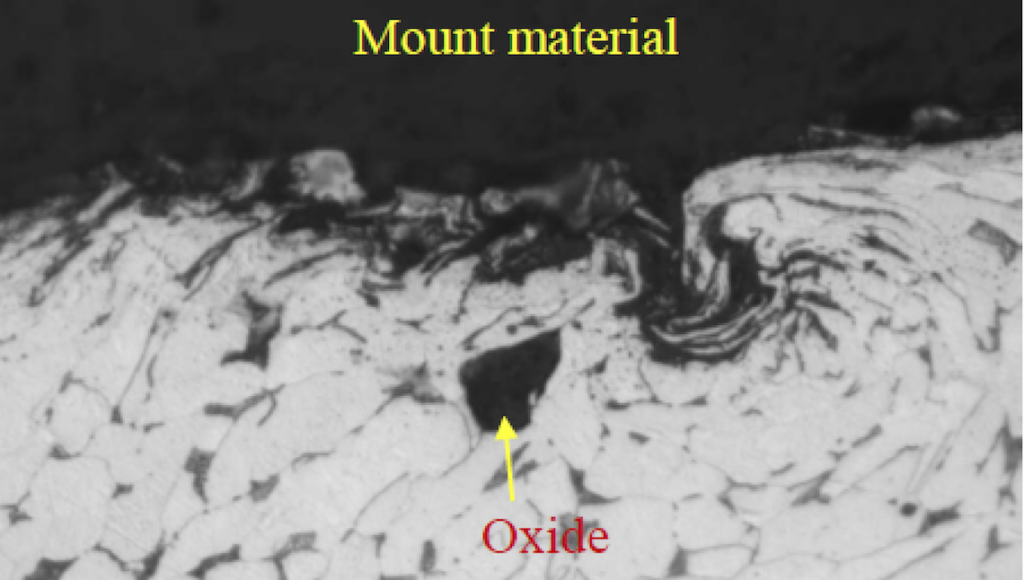Using low-quality steel is one of the leading causes for both rust jacking and changes in brake pad dimensions. It is getting worse because of the increased use of mill scale steel, commonly known as ‘black steel’ (non‐ pickled and oiled steel). Unlike the OE, the North American aftermarket has little or no steel specifications for

the disc brake shoes allowing black steel to be used increasingly for brake pad manufacturing. GBSC conducted field research of discarded disc brake pads from job shops and engaged in discussions with metallurgists, major disc brake pad manufacturers and OE brake foundation engineers to get to the root cause of the premature disc brake pad replacement and the effects of black steel used for disc brake shoe manufacturing.
Mill scale, the flaky surface of hot rolled steel that is comprised of iron oxide, which is embedded in and around the bond line of the friction lining and the disc brake shoe, causes a weaker bond which is more susceptible to rust jacking. These iron oxides are also painted over after the disc brake pad is fully assembled, which compromises the adhesion of paint on the steel disc brake shoe. Disc brake pad manufacturers, using black steel, heavily shot blast the disc brake shoes after they have been stamped in efforts to remove the mill scale.
This heavy shot blasting can deform and compromise critical dimensions of the disc brake shoe causing fit, function, and safety issues in the brake caliper assembly. GBSC randomly selected leading aftermarket disc brake pad brands to carry out an intensive study to further analyze the above mentioned disc brake pad failures and the effects of black steel. The parts were put through a standard 96-hour salt spray test per ASTM B117, in accordance with OE requirements, in which the disc brake shoe must not exceed a maximum of 5% red rust. All of the painted disc brake pads failed to meet this requirement even before the 20-hour interval. The only disc pad sets to meet the salt spray rust requirements were the zinc coated disc brake pads. Upon inspection at different intervals of the salt spray test, almost all disc brake pad sets showed severe out of tolerance measurements in critical functional areas. Some disc pad sets were out of specification in the critical areas right out of the box.

Metallographic cross‐ sections of some of the disc brake pads, including black steel samples and suspected black steel manufactured disc brake pads, were prepared in accordance with ASTM E3‐ 11 and ASTM E407‐ 07. They were examined using metallographic procedures incorporating Scanning Electron Microscopy, X‐Ray Spectrometry, and Microstructural Analysis. Iron oxides (mill scale) were found embedded in subsurface locations of the black steel samples and in the bond layer of suspected black steel disc brake pads. No iron oxides were found in disc brake pads manufactured with disc brake shoes made from SAE 1010 hot rolled, pickled, and oiled steel.
